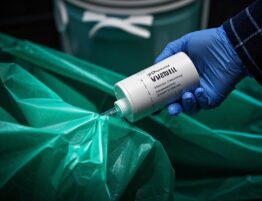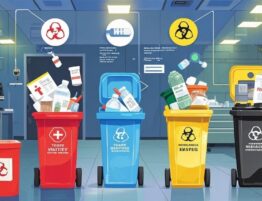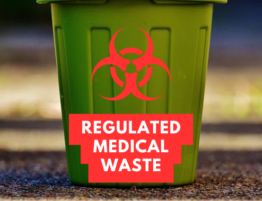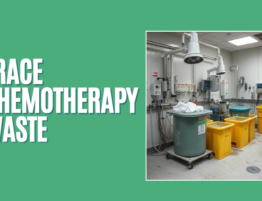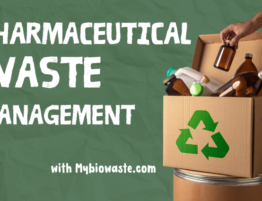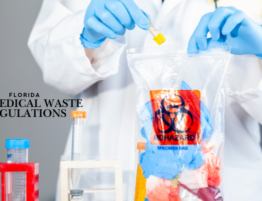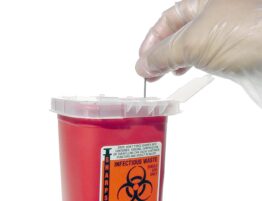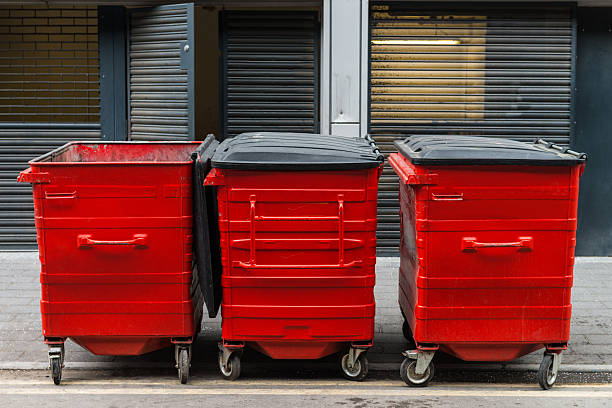
One may frequently see a variety of brightly colored trash cans in both the calm lanes of communities and the busy streets of cities. Of these, the red trash can is significant. Its bright color acts as a lighthouse, directing people to dispose of specific waste. But why is the red dustbin so crucial in our day-to-day lives, and what is its particular function? Let’s examine its function and importance in more detail.
The Purpose of Red DustBin
The primary purpose of the red dustbin is to contain hazardous waste. In contrast to ordinary waste, which can be disposed of using standard methods, hazardous waste must be handled carefully since it poses a risk to the environment and human health. Chemicals, batteries, electrical equipment, and medical waste are just a few examples of the diverse things that fall under the hazardous waste
category.
Hazardous garbage should be kept separate and placed in red dustbins to minimize contamination and environmental harm. Hazardous material disposal done incorrectly can result in air, water, and soil pollution, endangering ecosystems and public health. Authorities hope to expedite the collection of dangerous garbage and guarantee appropriate disposal and treatment techniques by designating specific containers.
Types of Waste Suitable for Red Dustbins
1. Chemicals
Hazardous garbage belongs in red dustbins and includes household chemicals, bleach, insecticides, paint thinners, and solvents. If not handled properly, the poisonous components in these compounds can cause harm to ecosystems and living things.
2. Batteries
Heavy metals, including lead, mercury, and cadmium, are present in single-use and rechargeable batteries, and if disposed of incorrectly, they may leak into the environment. Red trash cans offer a secure location for these batteries, guaranteeing they are recycled or disposed of properly.
3. Electronic Waste (E-waste)
Old computers, TVs, and cell phones are just a few examples of discarded electronics that may include lead, mercury, and brominated flame retardants, among other dangerous materials. Red dustbins make collecting and separating e-waste easier, allowing for safe recycling and keeping hazardous materials out of landfills.
4. Medical Waste
If not disposed of appropriately, some medical waste, including sharps (needles, syringes, and lancets), can harm one’s health. Medical waste is disposed of and contained safely with red dustbins, which lowers the risk of contamination or unintentional accidents.
5. Biohazardous Waste
This refers to materials that bodily fluids, blood, or infectious agents have tainted. This includes objects like discarded needles, filthy bandages, and lab specimens. Red dustbins offer a separate biohazardous waste disposal alternative that reduces the possibility of infectious disease transmission and guarantees adherence to health requirements.
Importance of Proper Disposal
It is crucial to properly dispose of hazardous trash to preserve the environment and public health. Improper disposal of dangerous chemicals can contaminate land, water supplies, and the air we breathe, resulting in various health problems and ecological imbalances. Furthermore, organizations and people found to violate waste management standards may face financial penalties and legal repercussions for their unlawful disposal procedures.
By disposing of hazardous garbage in red dustbins, people make their neighborhood a safer and healthier place. Through recycling and recovery programs, responsible waste management techniques lower the danger of environmental pollution and preserve critical resources. Furthermore, correctly disposing of hazardous trash is beneficial.
Like the uses of Red Dustbin, you may also like to read about Sharp Container Disposal.
Community Engagement and Education
The community’s collaboration and active engagement are essential for effective garbage management. Campaigns for public awareness and educational programs are critical for encouraging appropriate disposal of garbage. Governments may enable people to make educated judgments and take proactive measures toward environmental sustainability by educating people about the correct usage of red dustbins and the significance of separating hazardous garbage.
Additionally, programs like collection days for household hazardous trash give locals a safe way to eliminate unwanted items and teach them about substitutes and waste-reducing techniques. Communities can strive toward long-term sustainability goals while safeguarding the health and well-being of present and future generations by promoting a culture of environmental stewardship and waste reduction.
Conclusion
The red dustbin is essential to responsible waste management systems since it offers a designated container for dangerous materials that endanger the environment and human health. Hazardous trash should be separated and disposed of appropriately in red dustbins to prevent pollution, conserve resources, and improve community well-being. We can work to ensure that everyone has a cleaner, safer, and more sustainable future via involvement, education, and teamwork.

